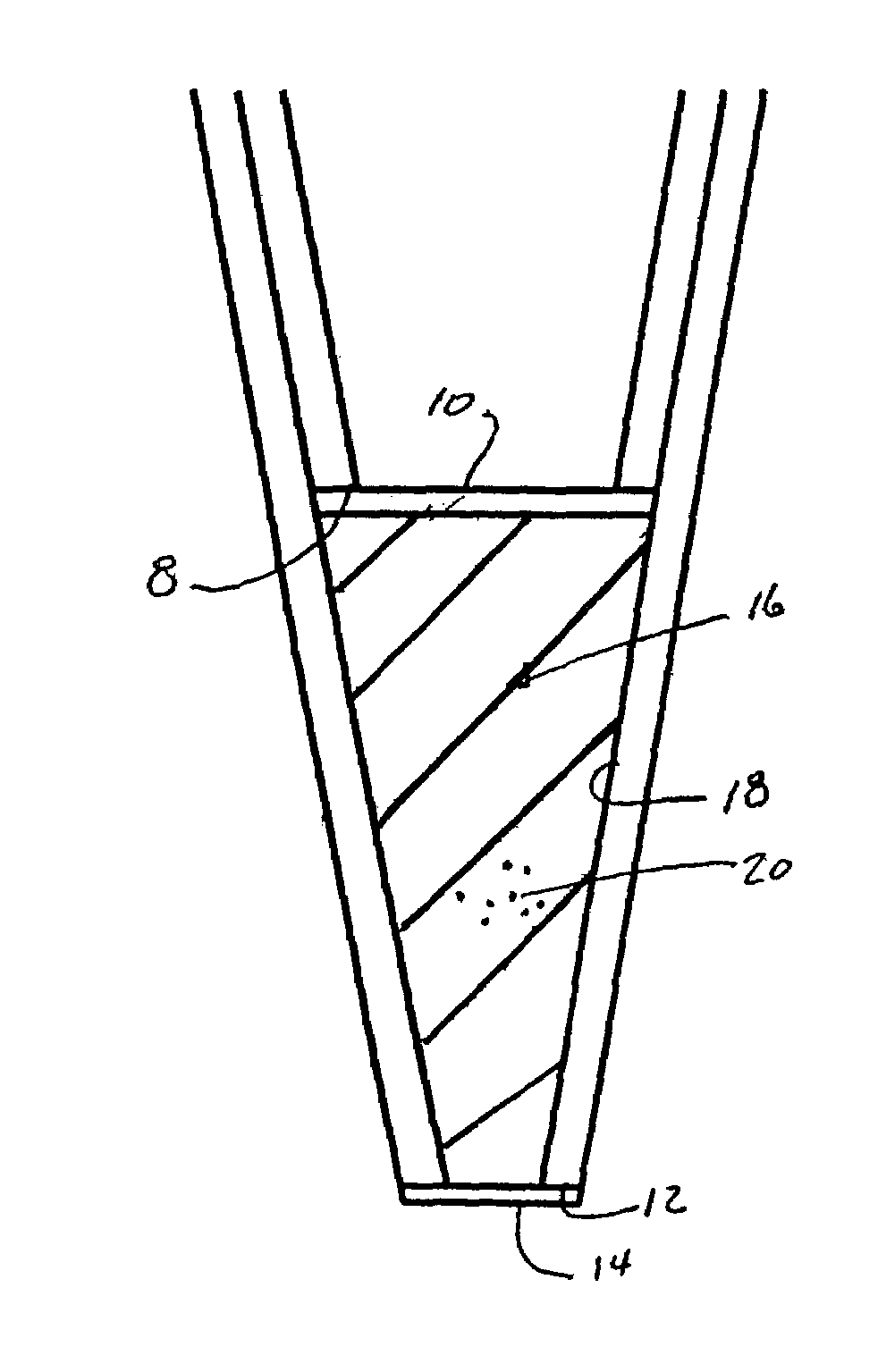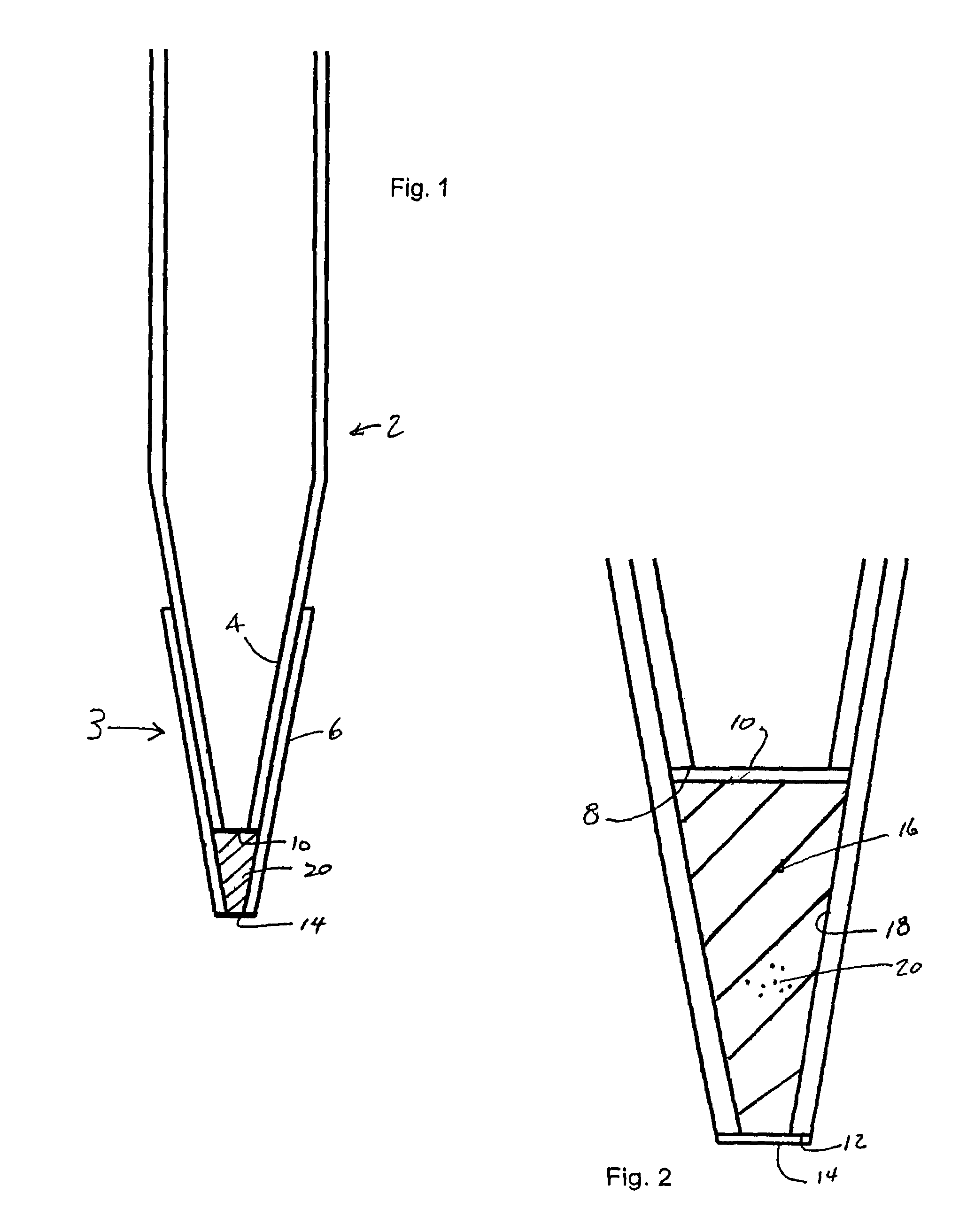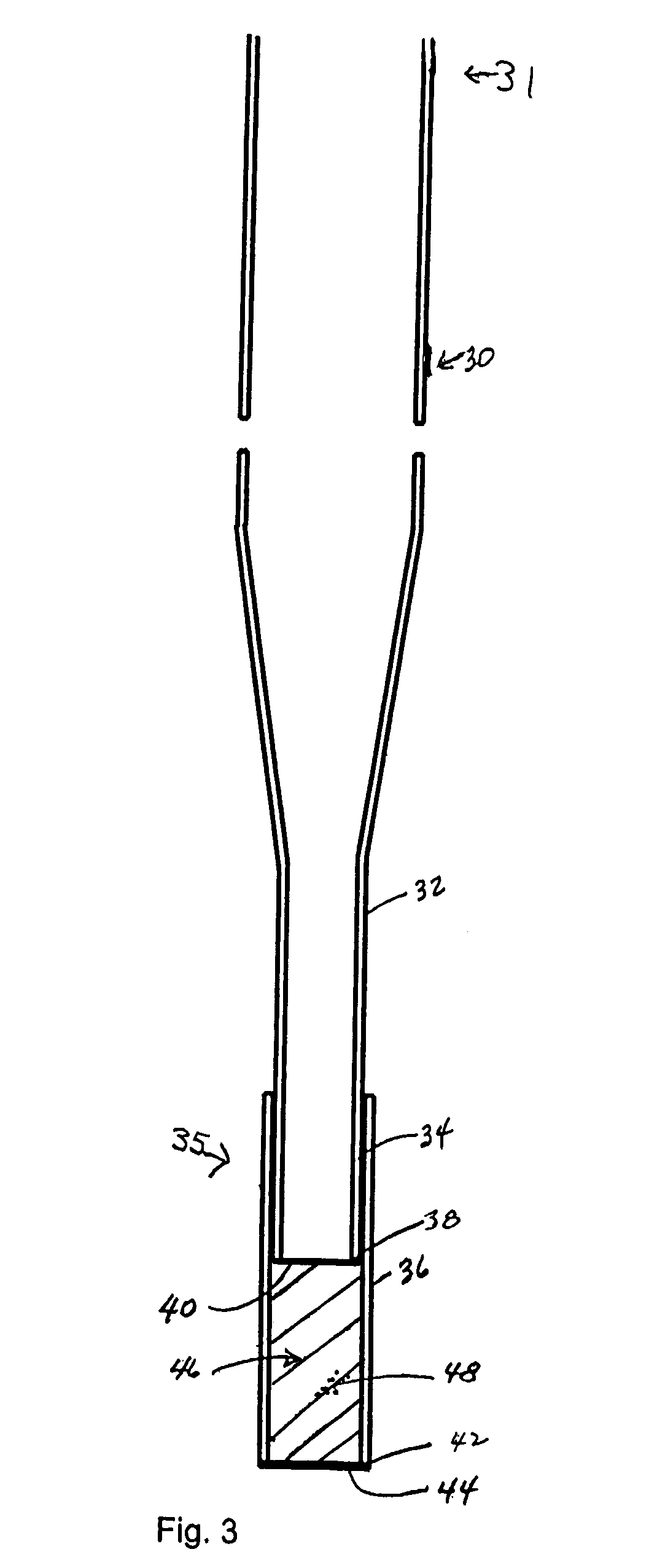Low dead volume extraction column device
a column device and low-desty technology, applied in sedimentation separation, biological material analysis, chemical/physical processes, etc., can solve the problems of difficult application of the packed-bed approach, limited quantification and/or enrichment of samples, complex processing of protein samples,
- Summary
- Abstract
- Description
- Claims
- Application Information
AI Technical Summary
Benefits of technology
Problems solved by technology
Method used
Image
Examples
example 1
Preparation of an Extraction Column Body from Pipette Tips
[0189]Two 1000 μL polypropylene pipette tips of the design shown in FIG. 6 (VWR, Brisbane, Calif., PN 53508-987) were used to construct one extraction column. In this example, two extraction columns were constructed: a 10 μL bed volume and 20 μL bed volume. To construct a column, various components were made by inserting the tips into several custom aluminum cutting tools and cutting the excess material extending out of the tool with a razor blade to give specified column lengths and diameters.
[0190]Referring to FIG. 7, the first cut 92 was made to the tip 92 of a pipette tube 90 to form a 1.25 mm inside diameter hole 94 on the lower column body, and a second cut 96 was made to form a lower column body segment 98 having a length of 15.0 mm.
[0191]Referring to FIG. 8, a cut 102 was made to the separate pipette tip 100 to form the upper column body 104. To make a 10 μL bed volume column, the cut 102 was made to provide a tip 106...
example 2
Preparation of SEPHAROSE™ Protein G and MEP HYPERCEL™ Extraction Columns
[0194]Referring to FIG. 9, a suspension of Protein G SEPHAROSE™ 4 Fast Flow, 45-165 μm particle size, (Amersham Biosciences, Piscataway, N.J., PN 17-0618-01) in water / ethanol was prepared, and an appropriate amount of material 114 was pipetted into the lower column body 98.
[0195]Referring to FIG. 10, the upper column body 104 was pushed into the lower column body 98 so that no dead space was left at the top of the bed 114, that is, at the top of the column bed. Care was taken so that a seal was formed between the upper and lower column bodies 104 and 98 while retaining the integrity of the membrane screen bonding to the column bodies.
[0196]Several tips of 10 μL and 20 μL bed volumes were prepared. Several MEP (Mercapto-Ethyl-Pyridine) HYPERCEL™ (Ciphergen, Fremont, Calif., PN 12035-010) extraction columns were prepared using the same procedure. MEP HyperCel™ resin is a sorbent, 80-100 μm particle size, designed ...
example 3
Purification of Anti-leptin Monoclonal Antibody IgG with 10 μL and 20 μL Bed Volume Protein G SEPHAROSE™ Extraction Columns
[0197]A Protein G SEPHAROSE™ 4 Fast Flow (Amersham Biosciences, Piscataway, N.J., PN 17-0618-01) extraction column was prepared as described in Example 2.
[0198]Five hundred μL serum-free media (HTS Biosystems, Hopkinton, Mass.) containing IgG (HTS Biosystems, Hopkinton, Mass.) of interest was combined with 500 μL standard PBS buffer. The resulting 1 mL sample was pulled into the pipette tip, through the Protein G packed bed at a flow rate of approximately 1 mL / min) or roughly 15 cm / min). The sample was then pushed out to waste at the same approximate flow rate. Extraneous buffer was removed from the bed by pulling 1 mL of deionized water into the pipette column at about 1 mL / min and pushing it out at about 1 mL / min. The water was pushed out as much as possible to achieve as dry of a column bed as is possible. The IgG was eluted from the column bed by drawing up ...
PUM
| Property | Measurement | Unit |
|---|---|---|
| thick | aaaaa | aaaaa |
| thick | aaaaa | aaaaa |
| bed volume | aaaaa | aaaaa |
Abstract
Description
Claims
Application Information
 Login to View More
Login to View More - R&D
- Intellectual Property
- Life Sciences
- Materials
- Tech Scout
- Unparalleled Data Quality
- Higher Quality Content
- 60% Fewer Hallucinations
Browse by: Latest US Patents, China's latest patents, Technical Efficacy Thesaurus, Application Domain, Technology Topic, Popular Technical Reports.
© 2025 PatSnap. All rights reserved.Legal|Privacy policy|Modern Slavery Act Transparency Statement|Sitemap|About US| Contact US: help@patsnap.com



